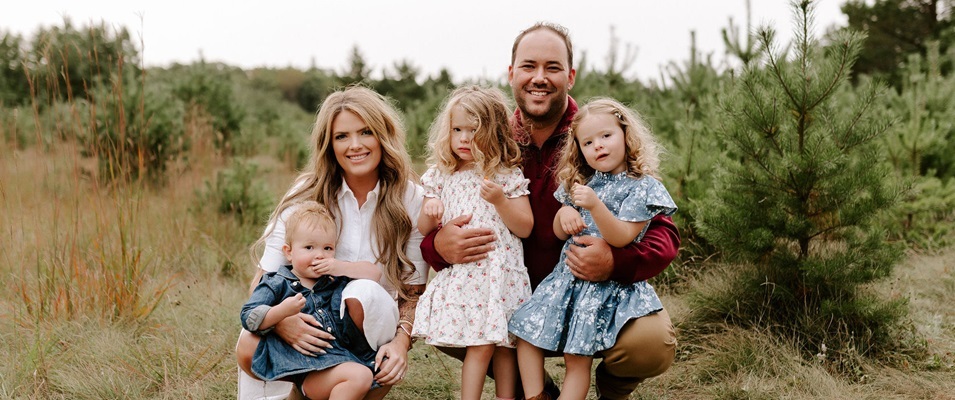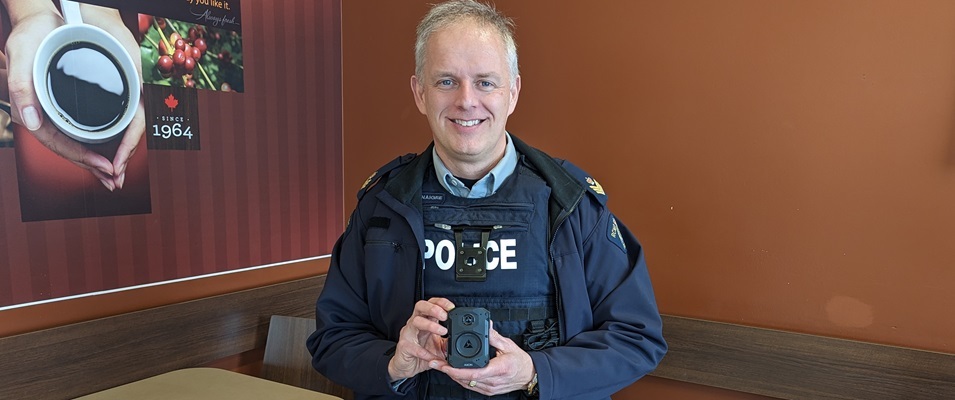
Food allergies in schools can be a life-threatening matter, and one local parent is wondering why it’s so hard to protect her kids.
Jen Gower of Île-des-Chênes has two children under the age of seven with anaphylactic reactions to certain foods. She removed her kids from Seine River School Division this year after learning that the school still hadn’t improved its allergy policies.
“The policies in the majority of schools are lacking,” says Gower. “We can educate more, and the problem is how we interpret and enforce these policies.”
Her family’s experience last year showed that her children’s school wasn’t able to provide a safe atmosphere for them to consume food.
One of her children had a reaction to a food item and came home sick. Gower says that she’s thankful the situation wasn’t worse and that her child recovered.
“We were lucky that it was mild, but there is something lacking when the [school official] argues with me about whether or not my kid had an allergic reaction or not,” she says. “We tried all last year to find a solution. We’re being pitted against other parents in the community and negatively stereotyped as being against other people.”
Food Allergies Study
In June 2022, the official journal of the Canadian Society of Allergy and Clinical Immunology (CSACI) published a study entitled “It Takes a Village.” The study gathered information about perceptions of Winnipeg parents, students, teachers, and school staff regarding the impact of food allergies on school-age students and their families.
According to the study, food allergies are estimated to affect at least six percent of children. Kids with these allergies and their teachers require the support and cooperation of parents and classmates with and without food allergies to prevent life-threatening reactions.
“Food allergy education is necessary for the entire school community and should include parents of school-aged children with and without food allergy, students with and without food allergy, and teachers and school staff,” the CSACI study found.
Students “Othered”
When Gower found that her children were eating lunch in the hallway, away from other students, she tried to work with administrators and parent volunteer groups to improve the situation, such as by introducing a supervised lunch program or a paid lunch program.
When no new measures were in place by this September, and having been told that nothing more could be done, she made the decision to homeschool.
“Yes, policy review takes time, but nothing has changed for me in over a year,” says Gower. “The school admitted that supervision is an issue, but the school says their hands are tied. Nobody is saying they have the jurisdiction on this. There is no enforcement. I pulled my kids from school because I don’t want my seven-year-old responsible for watching my five-year-old as they eat together in the hallway.”
Gower says that this experience made her children feel othered, which had mental health ramifications.
“For these kids, they are already scared, though they don’t want to be,” Gower says. “So when they are treated as different, you’re socially outcasting them. They begin to question, is this atmosphere safe? Are the adults going to protect me? My kid has suffered from anxiety, but not because of having an allergy, but because she has been excluded. She doesn’t want to eat in the hallway. Kids want to be together. They want to be kids.”
Anxiety and bullying are common experiences for those with food allergies. Participants in the CSACI study reported that children with food allergies were bullied, that children who accidentally brought banned foods to school were also bullied, and that parents could recognize that bullying around the issue was occurring.
Avoiding Emotion
Gower acknowledges that no one wants to be told what they can and cannot eat at school but she wants to see parents and children without allergies play a vital role in keeping everyone safe.
“We don’t want to police anyone else’s lunch,” she says. “We don’t want to deprive anyone of what they can eat.”
She wants to keep the conversation open—and keep emotion out of it.
One recent Facebook discussion, she says, turned negative after a local radio show host presented to the public a letter that had been sent home to parents from a Winnipeg school.
“The letter said that beef, chicken, mutton, and pork couldn’t be sent to the classroom. Parents were in an uproar,” says Gower. “That’s not helpful, and I’m not advocating beyond reason. People have to be given time to adjust and realize they will need to prepare lunch differently. They need time to alter their shopping habits. There’s stress when it comes to what groceries to buy to provide lunch for our kids… We’re not trying to be the Karens of the world. We just want our kids upright and breathing, just like you do.”
School Policies
In many school divisions, food allergy policies are not readily available. On websites for the Hanover School Division and Seine River School Division, the information can be hard to find.
After a request by The Citizen, the HSD did not supply their food allergy policy. Parents of students in the division have said they have to ask individual teachers for information because it’s not readily supplied at the beginning of the school year.
“Individual schools manage the operational aspects in adherence with the Canada Food Allergy guidelines,” says Shelley Amos, HSD superintendent. “They discuss with individual parents upon registration, once an allergy has been identified.”
SRSD could not be reached for comment and did not supply an allergy policy.
The Sunrise School Division, which neighbours SRSD, has an extensive document entitled Student Health Services Requirements Process (Anaphylaxis) available on their website. The document establishes safe lunchroom and eating area procedures.
The provincial government produced a school nutrition handbook in 2005 which includes a mention of managing food allergens and pointing educators to five sources of information on asthma, allergens, and keeping kids with food allergies safe.
A booklet on provincial nutrition guidelines for schools, published in 2014, included a disclaimer stating that it didn’t contain information on food allergy management.
Need for Education
In the 2022 CSACI study, parents of children with and without food allergies, as well as school staff, all reported the overall need for more food allergy education in schools.
Parents of children without food allergies cited in the study recognized their own need for more education to prevent cross contact between foods, recognizing reactions, the seriousness of food allergy, and bullying around food allergies.
Teachers rated themselves and their students with and without food allergies as needing education in how to recognize a reaction and administering the epinephrine auto-injector.
More than that, the study’s participants said that they wanted to learn. One hundred percent of students with food allergies and two-thirds of students without food allergy surveyed were interested in learning more.
In Gower’s experience, this is true.
“Kids are open to it,” she says. “Lots of parents have high empathy, too. We’ve seen that there’s nothing fiercer than when kids decide to protect each other. The kids are on board. We just need adults to get more on board, too.”
What Would Help?
Gower says that parents of children with anaphylactic food allergies realize that no school will achieve the same level of protection that a family can achieve at home, but empathy, communication, and education would help.
She believes that a classroom-by-classroom policy may not cut it and some complete omissions may be needed schoolwide, especially until young kids grow old enough to govern themselves reliably.
“When you have younger-years children… and when there’s low supervision, accidents happen,” Gower says. “Not just peanuts and peanut butter, but dairy is really hard to navigate. We need people to realize that it’s not just a milk carton or yogurt or cheese strings, but it’s muffins or cupcakes. And some things you can clean up or throw away, but smearable items leave residue behind.”
Supervision, she argues, is lacking in rural schools.
“In rural communities, how many adults supervise? Sometimes none. Sometimes it’s an older child. And they’re not in the classroom for the entire time of eating. They float from room to room.”
At bare minimum, Gower suggests that allergy information with pictures be visibly posted to encourage awareness of any accommodations that are needed at school. Also, letters with comprehensive information should be both sent home and presented to the classes where allergies are present.
In this way, teachers and volunteers would receive the education they’re interested in. They can then be proactive with their students.
Gower also believes that there are other ways to celebrate student milestones or holidays besides pizza and cake.
“Food should not be a reward in general,” she says.
If parents want to send shareables to the class for their child’s birthday, she would recommend stickers, pencils, or fun erasers. With a teacher’s help, parents could donate a book or a game which the child could present to the class. A short class activity, like planting a tree, bush, or flowers, could be enjoyed by all without involving food.
Lastly, Gower says that information is better received, and social change is more successful, if parents model empathy at home.
The CSACI study backs this up, asserting that “parents influence the belief system of their children and food allergy education for parents of children without food allergy will contribute to the education of children without food allergy.”
Gower is asking educators and parents to realize that food allergies can be made into a friendly yet important conversation topic. And she hopes that systemic change is coming in local school divisions.
“There’s been a top-down leadership, which is not communicative about this issue,” she says. “Leadership dismisses this and says to us, ‘Get comfortable with being uncomfortable.’ This is not okay. If we can’t lead with empathy, it results in unsafe environments. We are asking for the same thing every other parent wants: our kids to be alive and breathing. We can do this. As a community, we can do this.”




















